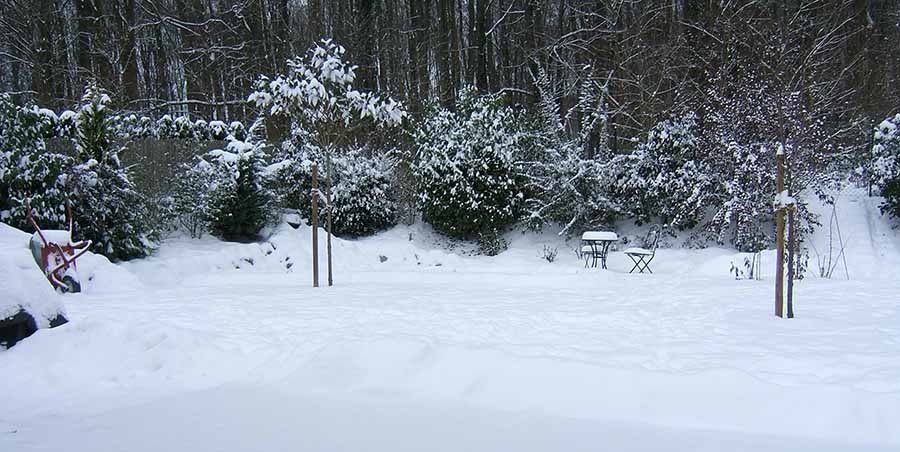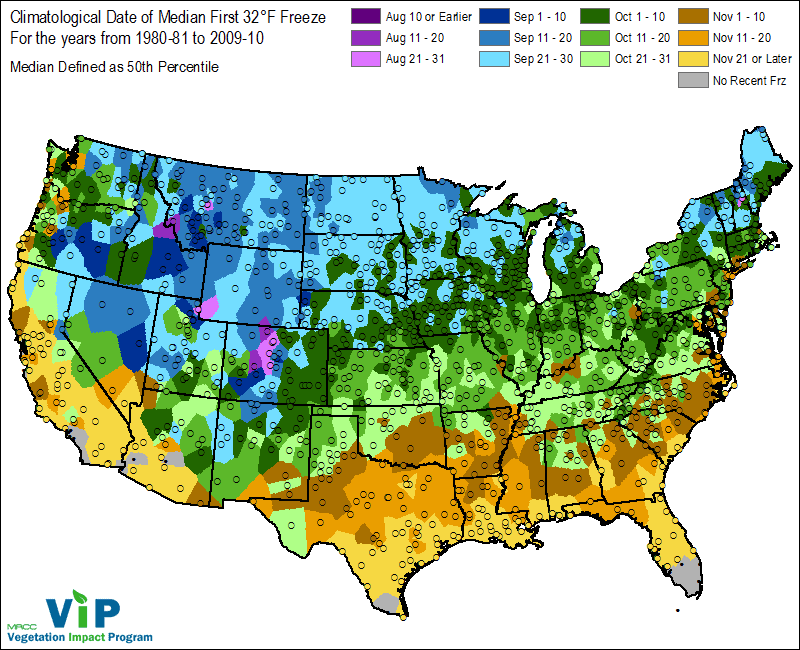If you live in any of the Northern States of the US, then you know winter can be a brutally cold and unforgiving time of year. It isn’t only your garden plants that can suffer damage from frigid temperatures – your garden hose is also at risk.
This guide to wintering your outside garden hose will show you why to prepare the hose (about 5 minutes of preparation) and how it can prolong your garden equipment’s life.
In the US, several states see harsh and freezing winters. If you reside in any of these states, even with global warming, you need to consider action as early as the beginning of September:
The Northern States With Risk of Early Freezing
- Alaska
- Colorado
- Idaho
- Iowa
- Maine
- Massachusetts
- Michigan
- Minnesota
- Montana
- Nebraska
- Nevada
- New Hampshire
- New York
- North Dakota
- Ohio
- Oregon
- Pennsylvania
- South Dakota
- Utah
- Vermont
- Washington
- Wisconsin
If you live in any of these states, then put a note for September on your calendar. You’re going to want to make sure that you’ve taken care of your garden hose by the end of this month at the latest. On the map below, any states with blue can see the first freeze in September.
So if you live in one of the states with a blue color above, then you’re going to want to pay close attention to this instruction.
Procedure For Winterizing A Hose
Follow these steps to ensure an adequately winterized hose that will last for years to come.
- Turn off outside taps. Usually, there is a valve to turn off the water both outside and inside the building. Turn off the water inside the building (usually where it exits to the outside is where you’ll find the inside valve). Only turn off the valve if it is the only valve going out of the house for your garden hose supply. Don’t make the mistake of turning off your house’s primary water supply. Although that might be funny in hindsight, it likely won’t be fun at the time.
- Keeping the internal valve closed, open the valve located outside your house. It will allow any water still in the line within the wall to escape.
- Turn on your hose to relieve any extra pressure still in the hose line. It is essential to do this so you don’t get sprayed with cold hose water.
- Remove the garden hose from the house tap and remove all fittings. If you have a hose handle on the end, remove it. Take the hose and all components apart.
- Drain the water from the hose components.
To drain the water from the hose – follow the following instructions.
- Start by neatly coiling up the hose on the ground. Both ends must be open and free of extra addon parts like sprinkler heads, hand-held spray nozzles, and similar garden hose tools.
- Lifting one end of the hose, slowly uncoil the hose and lift it, coiling it again after raising it by holding the hose and looping over your shoulder. The best coil loop size for most hoses has an approximate diameter of 24”.
- Completing this method should result in you holding the entire hose, neatly coiled and utterly devoid of water. The water should have escaped from the end of the hose lying in the coil on the ground as you slowly lift and re-coil the hose.
Common Hose And Wintering Questions

You’re probably wondering things like – why should I bother doing this with my hose? Well, in short, it will wreck your hose as to why you’ll have to keep reading to find out this and more common questions and answers about wintering your garden watering equipment.
Can Garden Hoses Be Left Outside In Winter?
Yes, if you want to let the hose drastically age and possibly suffer irreparable damage. In other words, it’s the same as jumping from a cliff – you could do it, but why on Earth would you want to?
The freezing temperature has a curious effect on water – it turns into a solid. And in doing so, it tends to expand. This expansion isn’t just a small amount either, it’s noticeable. When the water trapped inside a hose or hose fittings is not released, the water freezes and will expand. It will do so by shattering your hose fittings and rupturing hoses. While the hose and fitting may also be brittle from the cold, the expansion of any freezing water trapped inside can quickly destroy a plastic hose nozzle or the rubberized hose itself.
Remember that the expansion of water as it freezes is no small amount, it expands by an amount of 9%! So don’t take it lightly.
Should You Bring Hoses In For Winter?
If you follow the method/instructions spelled out above for winterizing your hose, you may be able to leave the hose outside (in a shed or garage) for the winter. The rubber will still face the effects of becoming brittle and potentially cracking from the cold, but it will depend on the extremity of the temperatures where you live.
Bringing a fully drained (winterized) hose indoors and storing inside your warm house for the winter is the best way of achieving longevity for your rubberized hose.
How Do You Store Garden Hoses For Winter?
As mentioned earlier, the critical thing to do with a hose is to ensure that it is entirely appropriately drained before storage. Maintaining a neatly coiled hose that doesn’t suffer fatigue can be challenging if unaware of how to coil without twisting the hose.
I like to think of hose coiling as doing my hose dance. As I coil the hose in the 24” diameter loops, I often have to do a little twirl around to untwist the hose I am attempting to coil.
Keeping the coils twist free is the best way to store a hose, whether in summer or winter. And the coil size should feel ‘natural’ for the pliability of the hose you have. Less flexible hoses will need larger diameter coils for proper storage. Most common hoses coil to a very comfortable 24” diameter coil size.
How Do I Keep My Hoses From Freezing In The Winter?
There are only two steps to protecting hoses from freezing in winter:
- Drain all water from the hose.
- Bring the drained hose indoors.
At What Temperature Do Outdoor Faucets Freeze?
The freezing point for water is 32 degrees Fahrenheit, 0 degrees Celsius. Once temperatures drop below this point, faucets containing water may start to freeze. However, water under pressure in a tap usually won’t freeze solid until a few degrees below.
For caution, always assume that your faucet and other garden water-containing equipment and fixtures could freeze at the freezing temperature of the water. Apply high levels of vigilance and preventive action to avoid freezing fixtures, water-lines, and equipment.
How Do You Insulate A Garden Hose From Freezing?
There is no way to effectively insulate a garden hose from freezing without using hot water within the hose itself. If using cold water outside in freezing temperature, freezing is inevitable.
Bring the hose in for the winter after draining it. Store it in your basement or a similar other indoor storage location where the hose can be kept in temperatures above freezing.
Is There A Hose That Won’t Freeze?
Most hoses will not fare well in the cold. Some do a much better job than others, though. Take the Flexzilla Garden Hose, for example. This hose can take temperatures from -40 to 140 degrees Fahrenheit. If you want to talk about an extreme and robust hose – this is the one.

Check the current price for teh Flexzilla Garden Hose here on Amazon
Can Soaker Hoses Be Left Out In The Winter?
Soaker hoses can be left outside in a shed or garage if appropriately drained. However, for longevity, most hoses, whether standard rubber, soaker, or even drip-lines, all fare better when stored in above-freezing conditions.
Can Drip Hoses Be Left Out In The Winter?
Drip lines cannot be left outside in the cold unless adequately drained. Depending on the type of plastic, these drip lines can become brittle and even shatter, even if empty. Drip lines and other watering equipment stored above freezing temperatures for the winter always finds the best result.


